Ambrosia acanthicarpa (Bur Ragweed) - photos and description
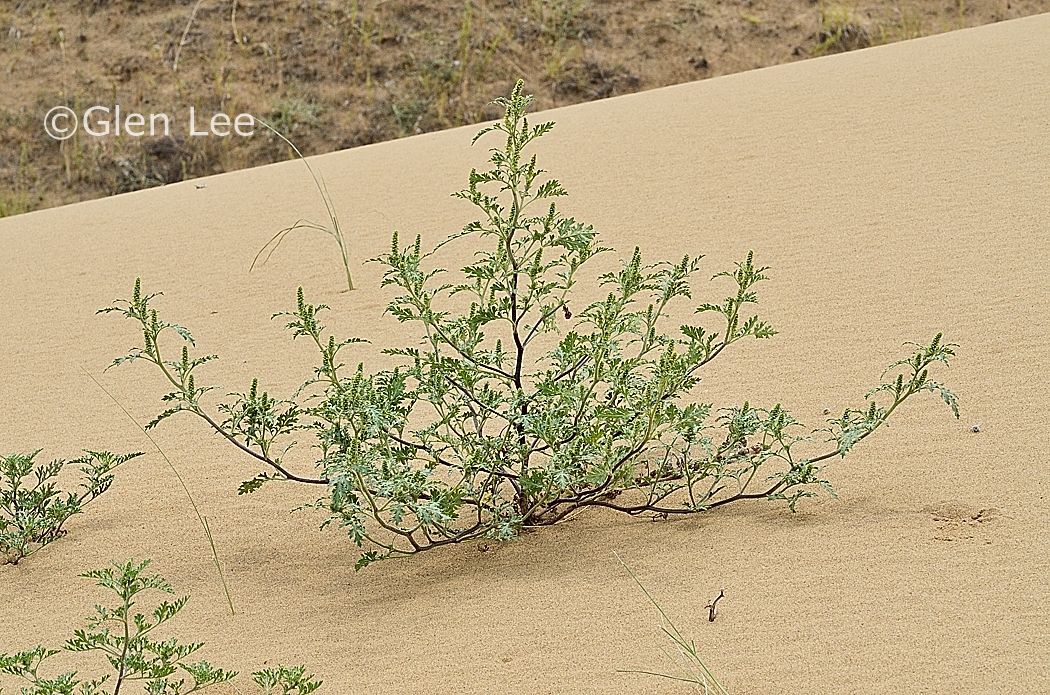
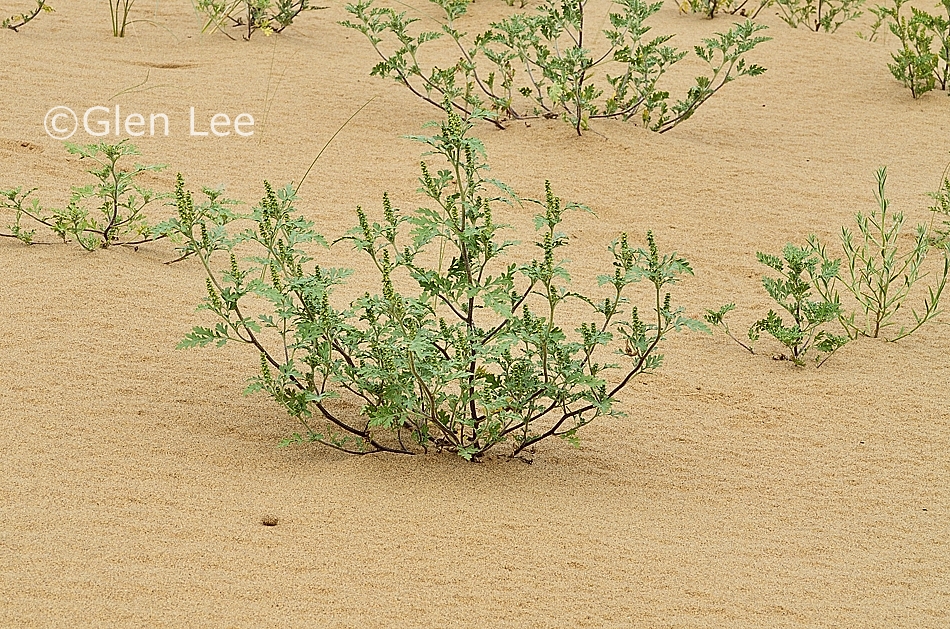
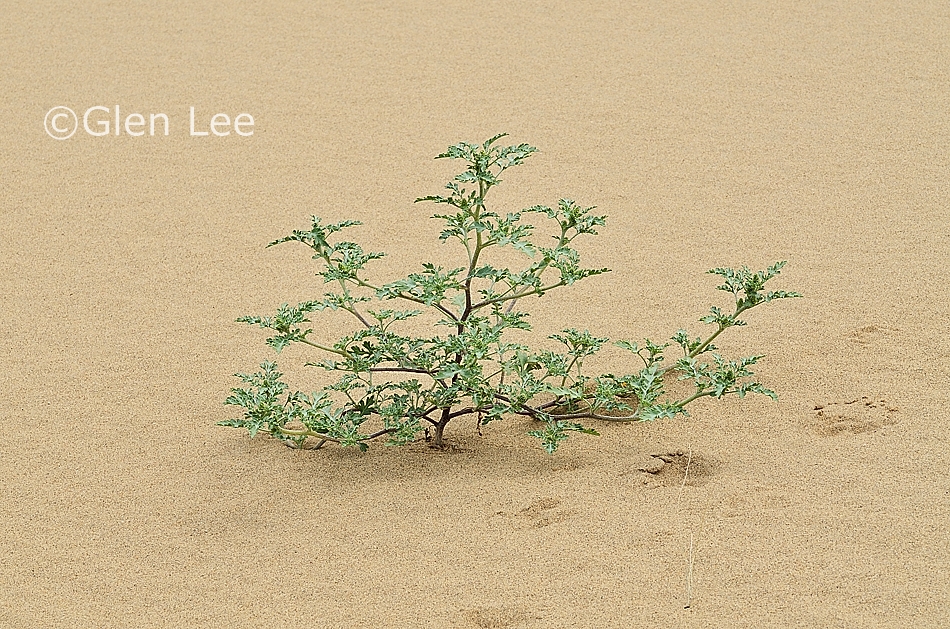
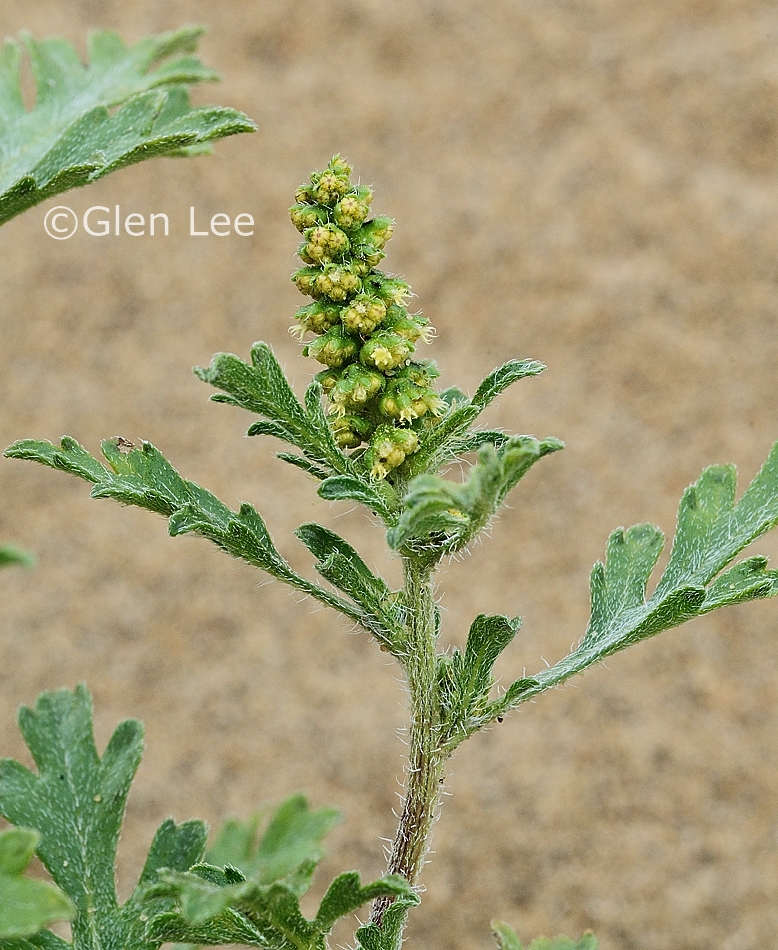
Male flower spike in above photo.
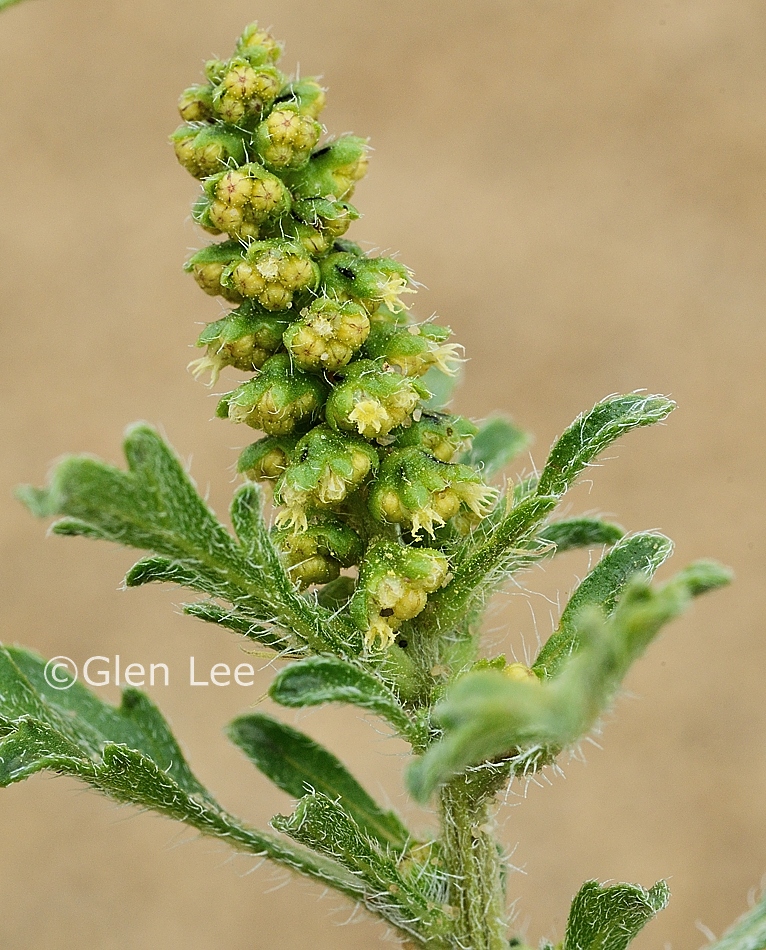
Male flower spike in above photo.
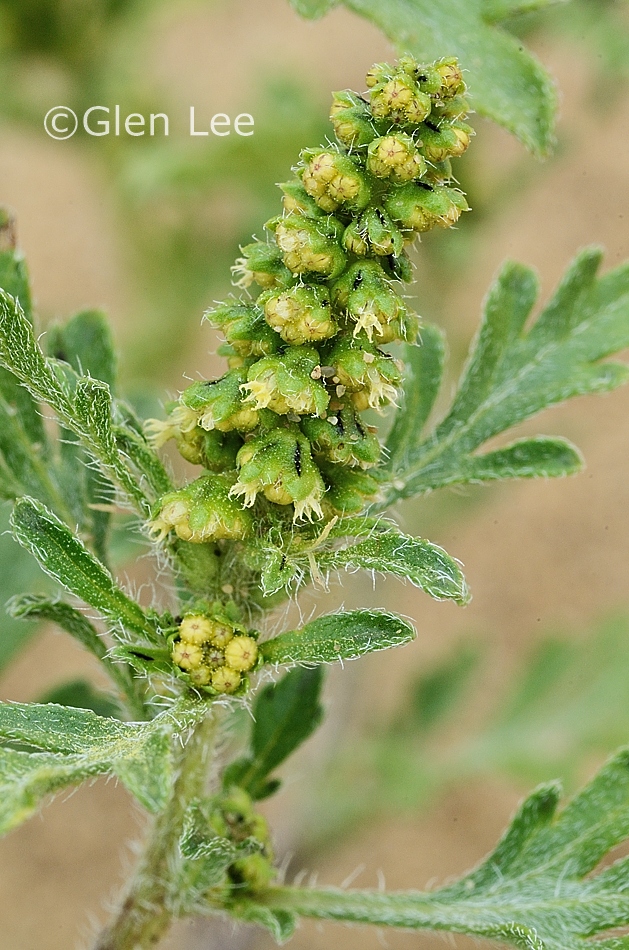
Male flower spike in above photo, note the black nerves (lines) on
the involucres.
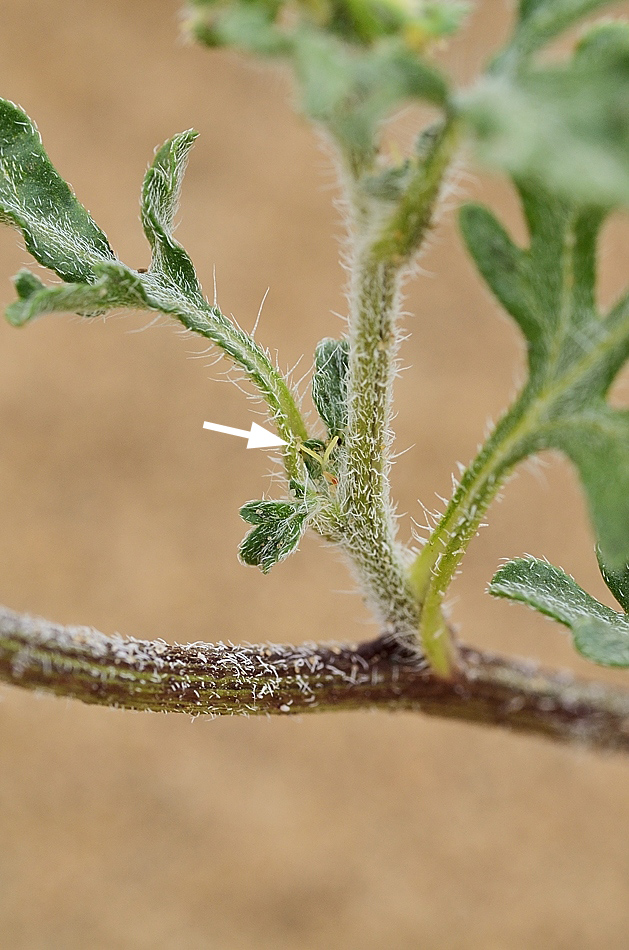
Female flower in leaf axil in above photo, August 1st.
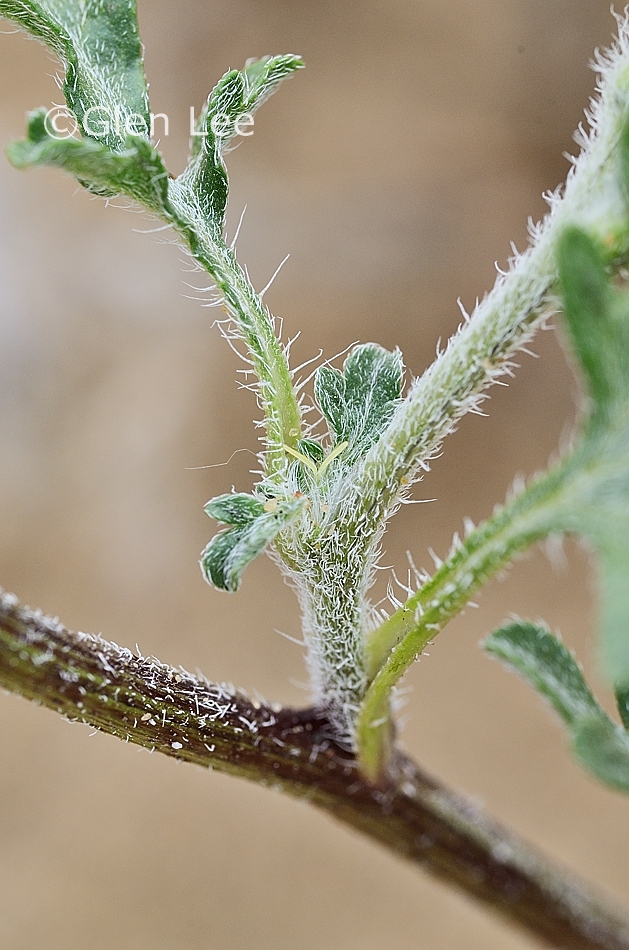
Female flower in leaf axil in above photo, August 1st.
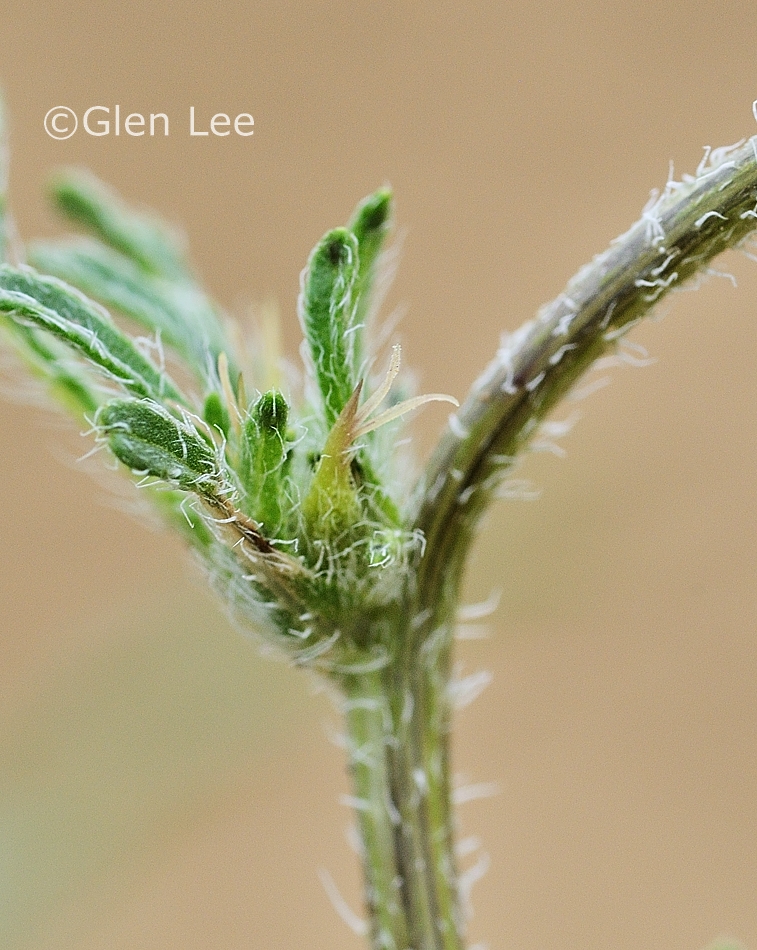
Female flower in leaf axil in above photo, August 1st.
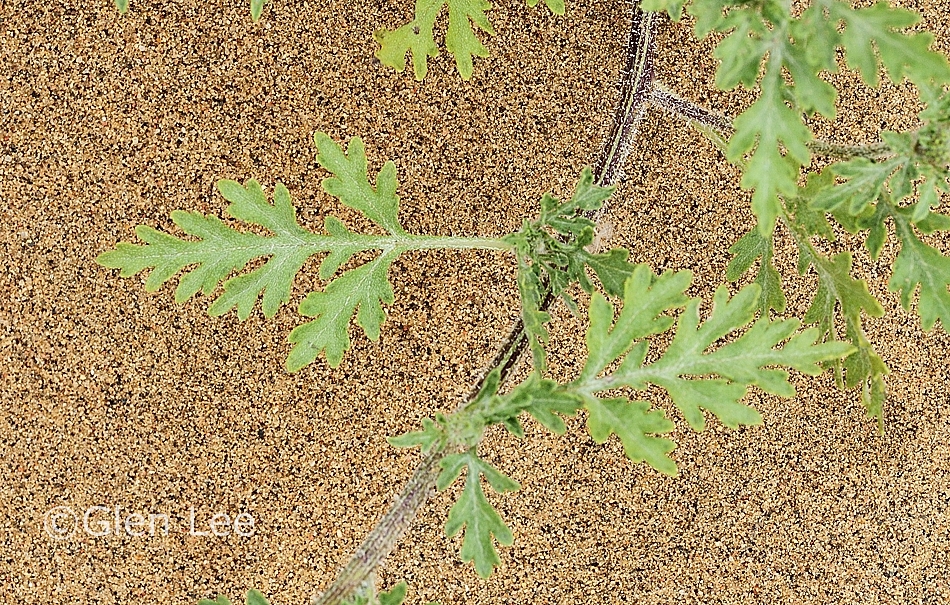
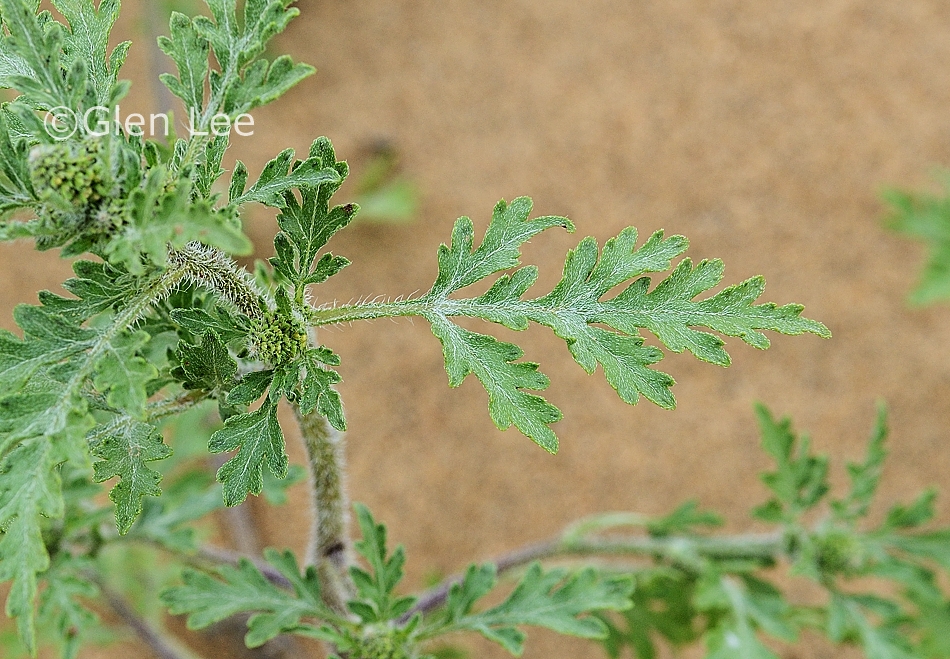
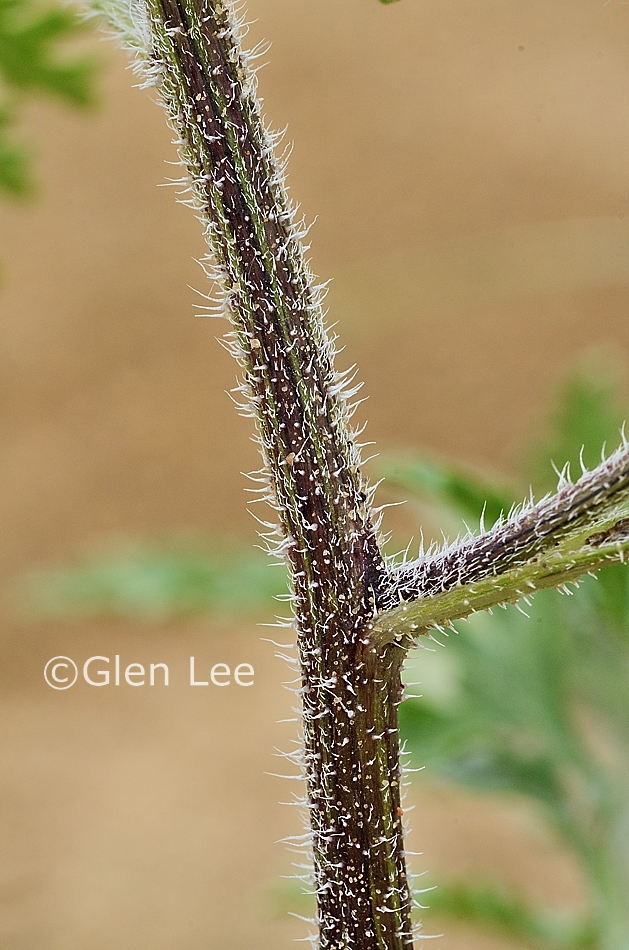
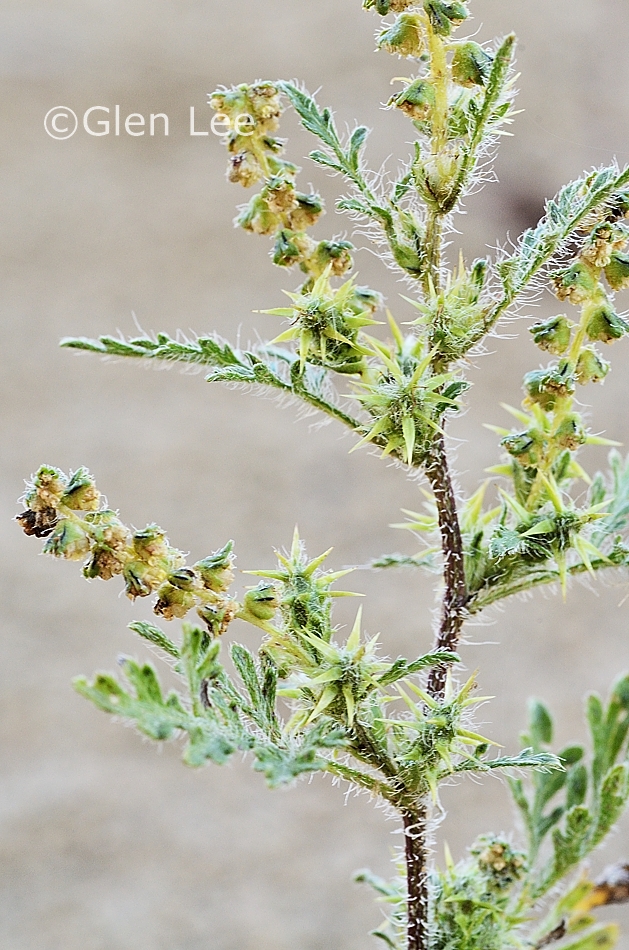
Spiny involucres have developed by August 27th.
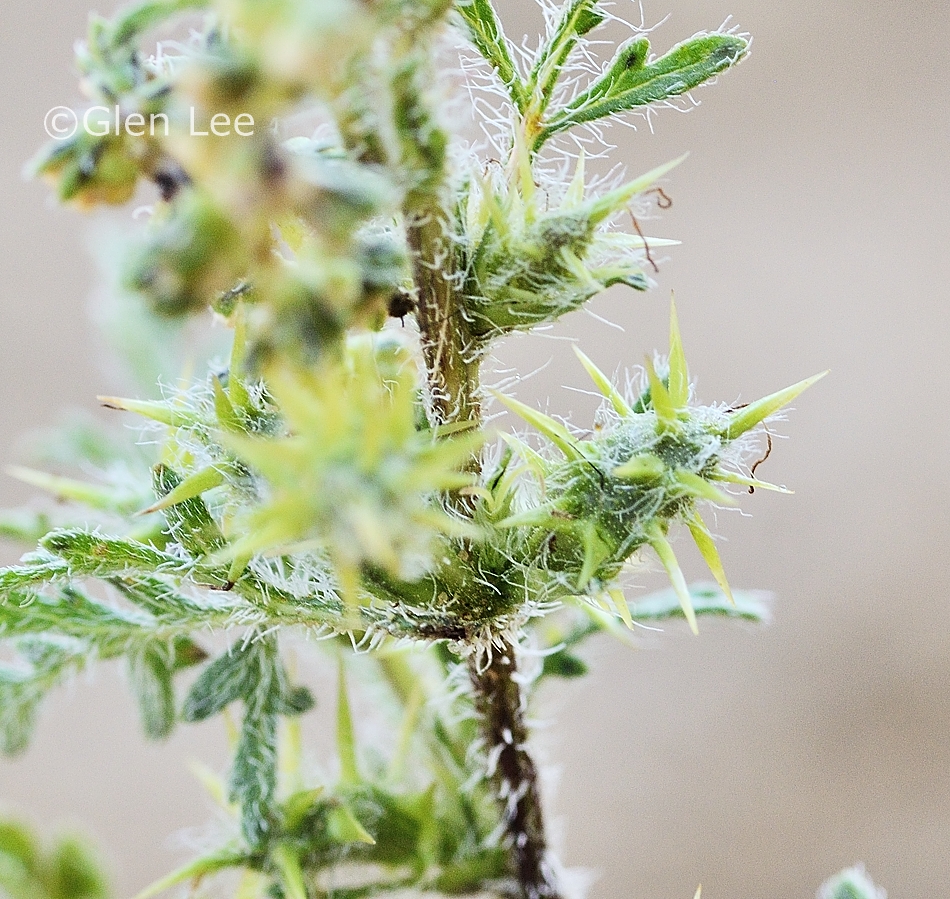
Spiny involucres have developed by August 27th.
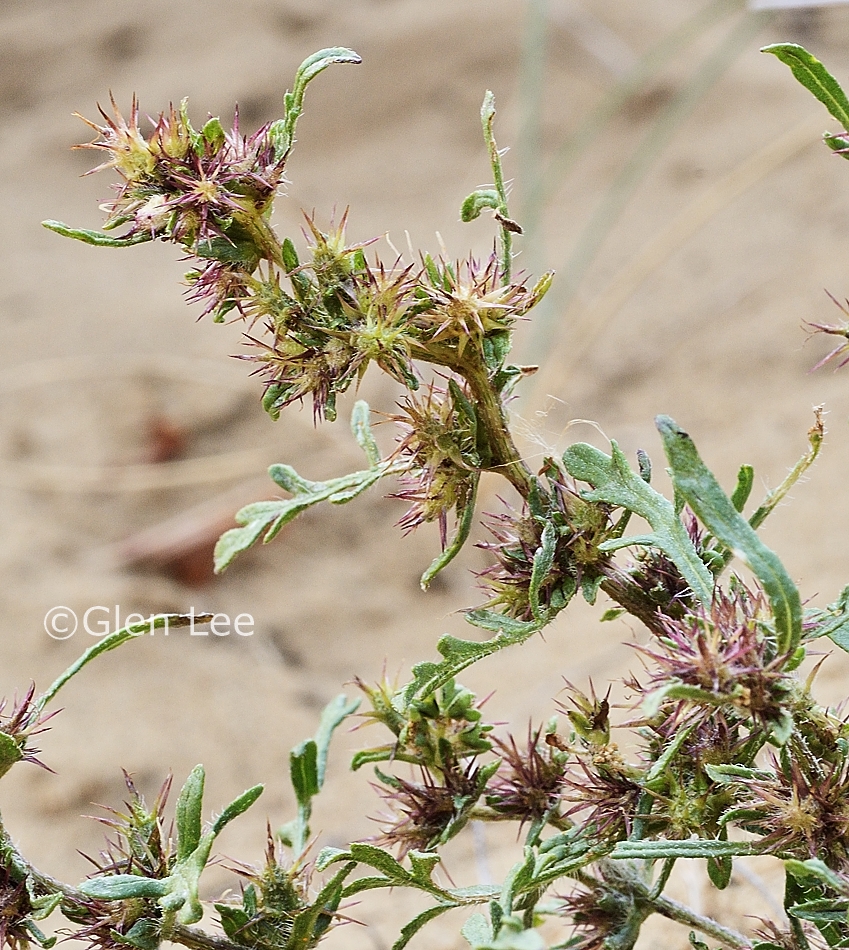
Spiny burs / fruits on September 18th.
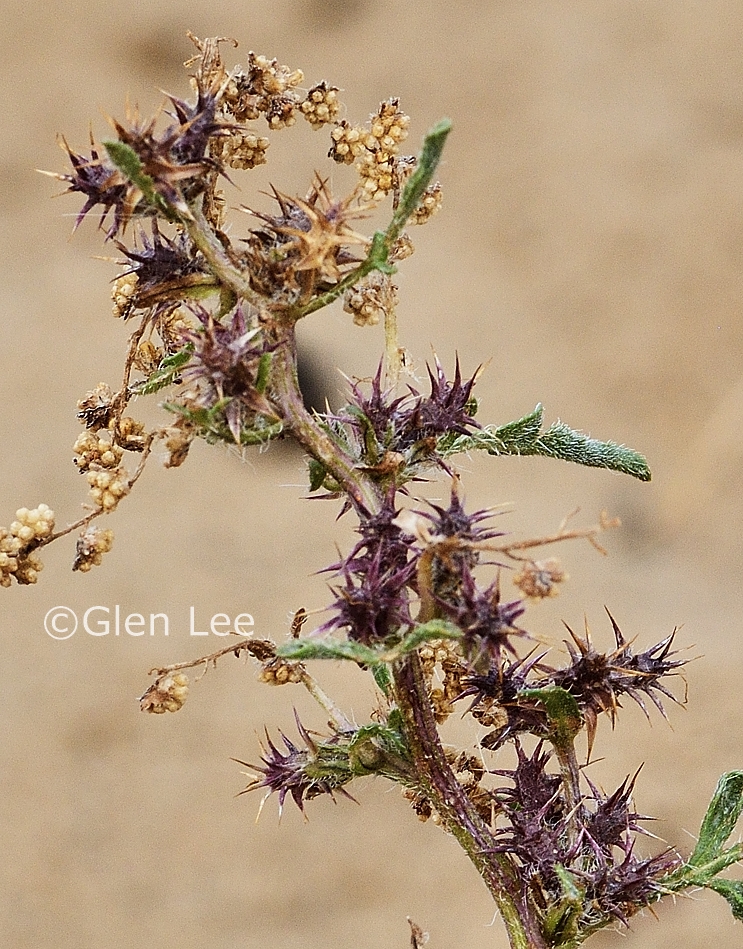
Spiny burs / fruits on September 18th.
Origin: Native.
General: Annual plants with a tap root, and bushy, decumbent growth habit. Leaves and stems bristly hairy. Lower stems purple in colour, fading to green at top.
Flowers: Separate male and female flowers on the same plant. The male flowers many, in terminal and axillary spikes. The involucres of staminate flowers with 1-5 black nerves. We measured a male flower spike at 3 cm long, and a male flower at 2 mm long. Female flowers in clusters in leaf axils, female flowered measured at 3 mm long.
Fruit: More or less spindle shaped, very spiny with spines in ~ 3 rows, we counted up to 15 spines. Spines measured to 3 mm long, fruit measured at 8 mm long.
Leaves: Alternate, ovate, divided to midrib. The leaf highlighted in the photo above was measured at 4 cm long by 3 cm wide.
Height: Plants measured to 58 cm tall, spread to 80 cm wide.
Habitat: Bare sand in sand dunes.
Abundance: Very rare, ranked as an S2 (as of 2021) by the Saskatchewan Conservation Data Centre.
Similar species: This plant might be mistaken for
the other annual Ragweed native to Saskatchewan -
Ambrosia
artemisifolia.
1) Habitat - A. acanthicarpa grows on sand dunes, while A.
artemisifolia grows roadsides and waste ground.
2) Staminate heads of A. acanthicarpa usually have black
nerves, while staminate heads of A. artemisifolia usually
without black nerves.
3) Fruit of A. acanthicarpa with ~ 3 rows of spines, spines 3
mm long, while fruit of A. artemisifolia with a single row of
spines, spines less than 1 mm long.
Synonym: Listed in some of the field guides we use as Franseria acanthicarpa.
When and where photographed: We took these photos August 1st and August 27th, sand dunes, Douglas provincial park, about 225 km northwest of Regina, SK, and September 18th sand dune in pasture, about 100 km west of our home in Regina, SK.